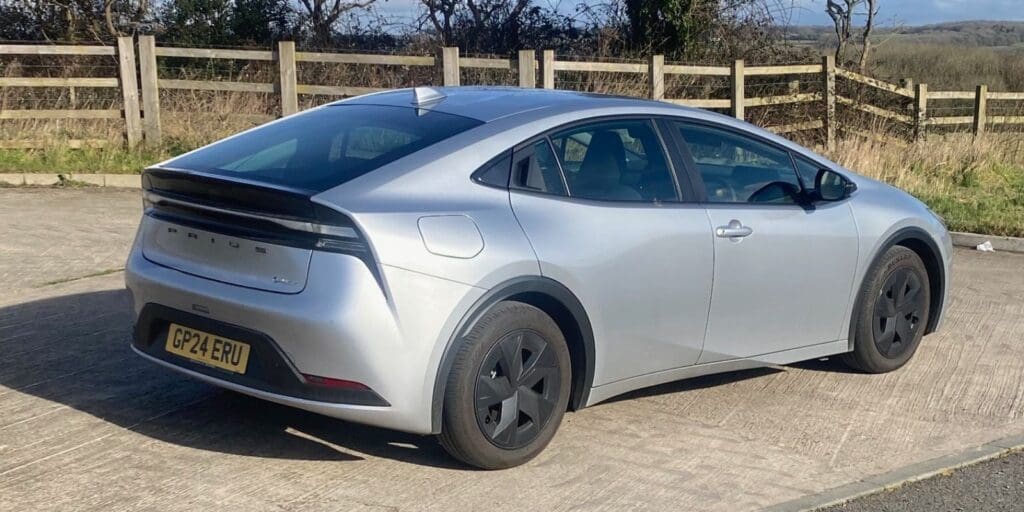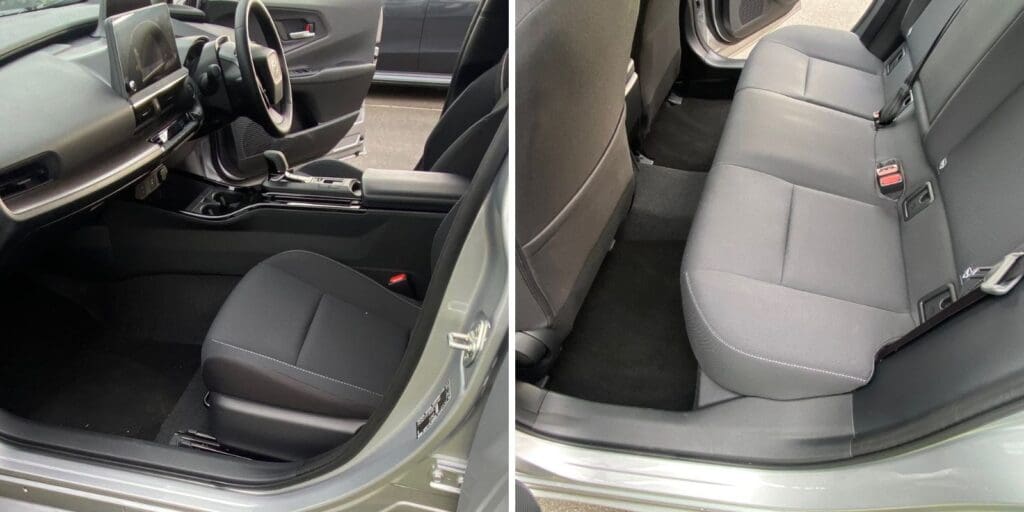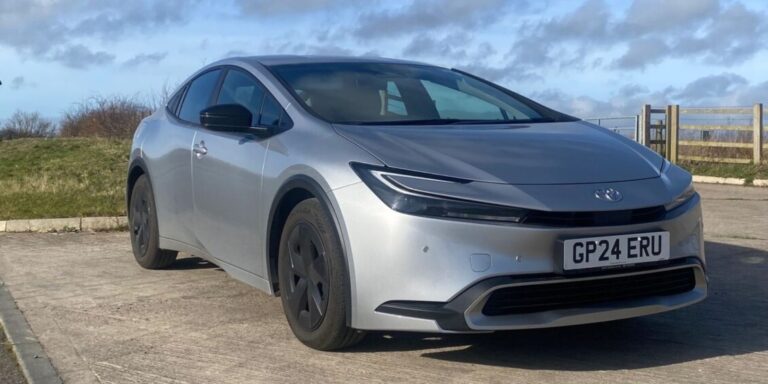The Toyota Prius was ahead of its time when created and today’s model still sets standards for others to aim at achieving.
Conceived in the mid-1990s, the Toyota Prius was the world’s first mass produced hybrid car when it was launched in 1997 and we have now seen five generations or evolutions of the car, which has been a saloon as well as a lift-back.
It is one of the most popular of Toyota’s model range fulfilling the role of a family car as well as being a model of choice among taxi drivers around the world, but with the latest generation there was a distinct drive towards the retail sector, the practical and boxy styling was ditched in favour of a flowing shape with less bootspace but greater visual appeal to private owners.
It is not dissimilar in appearance to an American Tesla or a sports coupe from German or Italian manufacturers and there has been a clear intention to confuse the eyes with its “hidden” handles for the rear doors giving it a two-door appearance in profile.
Entry-level Design from £37,315 comes equipped with 17-inch alloys, keyless entry and start, dual-zone climate control, adaptive cruise control and a reversing camera and for about £2,600 more the Excel adds heated, ventilated and powered front seats, a powered tailgate, digital mirror and 19-inch alloys. This brings it under the punitive £40,000 expensive car tax for five years.
Inside it’s very simply styled, almost bland to some eyes, but it has all the essential infotainment features most want and the driver can easily read the necessary dials infront of the wheel with a good clear row of secondary switches under the central screen, lights and wipers’ stalks immediately to hand.
Oddments space was very good throughout and the climate control was highly effective and efficient.

Today’s Design and Excel models share a petrol 2.0-litre plug-in hybrid system benefiting from fifth generation Toyota hybrid electric technology with a maximum 220bhp, a significant increase on the 121bhp of the previous Prius plug-in model.
In pure electric mode the range is approximately 53 miles.
Moving the traction battery under the rear seat and placing the petrol tank further forward and lower gives the car better balance and roadholding and combined with a stronger but reduced weight platform the car felt more composed and responsive.
The engine was an immediate starter and pulled away strongly in the selected Sport mode of the powertrain, which sharpens the pickup points and you also have Normal and Eco settings to suit circumstance.
If minded, the small selector lever can be nudged from automatic to B-mode and then driven more like a manual car with three degrees of retardation available to optimise the battery state for a journey.
You can disengage the electric mode to conserve the power battery or let the system choose the best combination. We found it gave us nearly 69mpg on petrol alone and much more when we pressed the EV and Eco modes.
What’s more this was achieved with little input from the driver, the highly sophisticated and refined powertrain computing the best methods of drive if not pre-selected by the driver from a small toggle switch on the centre console tray.
The engine noise was generally muted unless at high revs when it became more intrusive alongside the tyre rumbles and suspension sounds.
The Prius’s wedge-like profile ensured a very smooth flow of air over the car with full diameter wheel-discs easing it around the sides of the car, all helping with the smooth underfloor shape to minimise air resistance and promote greater economy.
At one point we opened two front windows and the system quickly asked if we wished to close them, again to reduce air turbulence and aid efficiency.
The powertrain was very good with enough push for a brisk getaway if not in a true-sporting sector, and it effortlessly covered motorway miles.
Steering was very well weighted for high speed or when parking, negotiating twisting country roads or anything else and the braking system needed only modest pedal pressure to rapidly slow the car with a good electric parking and release brake to hand.
The suspension coped well with all manner of surfaces beneath and smoothed out the bumps we heard from the tyres and wheels. It was a composed car on all roads.

Matching that were some really comfortable, wrap around front seats with a good adjustment range but those behind had to contend with a flatter set of seats which were not so comfortable but legroom was good throughout even if headspace was short in the back.
Visibility was really good with plenty of window area, massive front wipers and very bright intelligent headlights but with a slightly restricted rear view an thick B and C-pillars when watching traffic around the car.
Access and egress was a bit awkward infront because of the steeply sloping or swooping A-pillar but behind it was easier. The offset split rear seatbacks gradually dropped flat to increase the loadbed area from its stated 284 litres behind a panel and the sloping back window restricted the height of what could be placed inside with a high floor beneath.
The Toyota Prius today is very different to previous generations and outwardly more stylish and less awkward looking than the original designs of the ‘naughties’, but they may have been more practical as a result.
However, the real-world performance of today’s Prius sets it apart and in some cases ahead of rivals and probably will widen its appeal to drivers thinking of swopping brands without having to compromise to any extent.
FAST FACTS
- Model: Toyota Prius PHEV Design
- Price: £37,315 inc. metallic paint
- Mechanical: 152bhp 4cyl 2.0 litre petrol, automatic with 73bhp motor assistance
- Max Speed: 109mph
- 0-62mph: 6.8sec
- Combined MPG: 68.2
- Insurance Group: 31A
- C02 emissions: 12gkm
- Bik rating: 9%, £ZeroFY, £180SR
- Warranty: 3yrs/ 36,000 miles to 10years/ 100,000 miles
- Rating: 4.5/ 5
- Size: L4.60m, W1.79m, H1,42m
- Bootspace: 284 litres
- Kerbweight: 1555kg
For: Outstanding economy, very comfortable, good controls, well equipped, good handling
Against: Small nominal boot, some road & engine noise, bland interior, steeply sloping A-pillar restricts door aperture.

